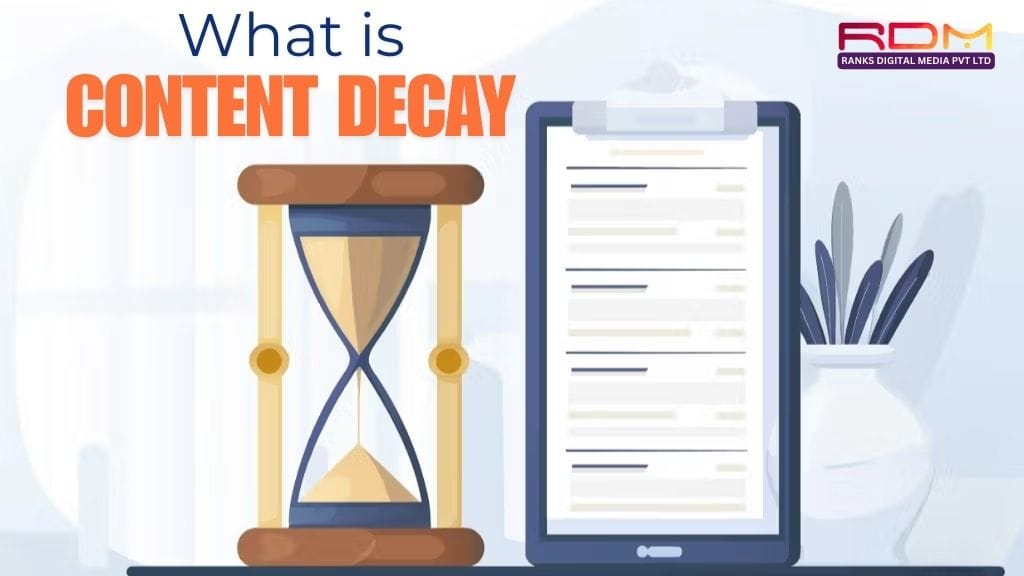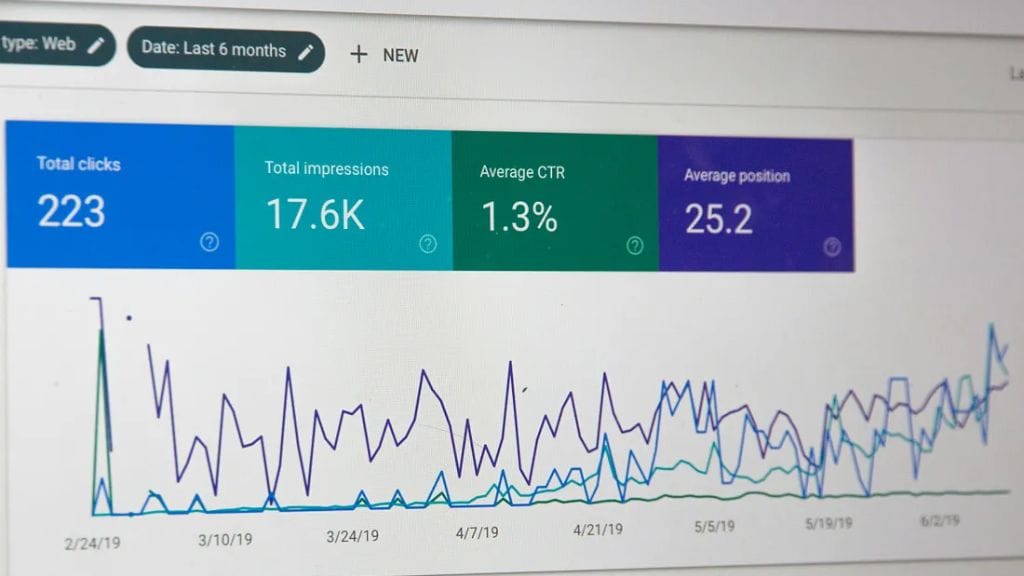Content Decay: In the world of SEO, maintaining relevance is everything. If you’ve noticed a gradual drop in traffic to some of your older content, you might be facing an issue known as content decay. This process, where content loses relevance over time, can be a silent threat to your website’s performance. But don’t worry—understanding content decay and learning how to reverse it can keep your SEO strategy thriving.
Contents
- 1 Understanding Content Decay
- 2 Why Content Decay Happens
- 3 How to Identify Content Decay in Your Website
- 4 Steps to Reverse Content Decay
- 5 Content Decay Case Study: Real Results of Content Revitalization
- 6 Best Practices to Prevent Future Content Decay
- 7 Conclusion
- 8 FAQs
Understanding Content Decay
Content decay is a gradual process where previously popular and valuable content on a website loses its effectiveness and search engine rankings over time. This decline is often not immediate but can go unnoticed until it starts significantly impacting the website’s traffic and user engagement. Here’s a closer look at how to identify and understand content decay:
Definition of Content Decay
Content decay refers to the drop in relevance and usefulness of content as it ages. It happens as newer, more optimized information becomes available, making older content less appealing to both users and search engines. Think of it as a “shelf life” for online content.
Signs of Content Decay in SEO Performance
Common indicators of content decay include decreasing organic traffic, drop in keyword rankings, and lower engagement rates. Monitoring these metrics can help you spot content that needs attention before it drastically impacts your website’s SEO.
How Content Decay Impacts Your SEO Strategy
Content decay can silently affect your overall SEO strategy, diminishing the hard-earned value of your content. As content decays, it not only loses its ranking but can also impact your website’s authority in your niche, signaling to search engines that your site is less relevant.
Why Content Decay Happens
Content decay doesn’t happen at random; there are several common causes that contribute to a gradual decline in content effectiveness:
Evolution of Search Intent
Users’ needs and search behaviors change over time. For example, “SEO techniques for 2020” might have been a top-performing search term then, but users searching today want up-to-date methods for the current year. As search intent evolves, content that once met user needs may no longer be relevant, causing a decline in interest and traffic.
Increased Competition and New Content
New competitors constantly enter the market, and existing competitors continually produce fresh, relevant content. If your content is older, it may be outpaced by more recent articles with better optimization, pushing it further down in search rankings.
Changes in SEO Algorithms
Search engines like Google frequently update their algorithms to prioritize content that aligns with the latest SEO practices and user preferences. Content that once ranked well may fall in the rankings if it no longer aligns with current SEO requirements or best practices.
How to Identify Content Decay in Your Website
To address content decay effectively, it’s important to know how to identify it. Here are some key strategies to uncover decaying content:
Analyzing Organic Traffic Drops
A drop in organic traffic is one of the most common signs of content decay. By using Google Analytics or similar tools, you can look at page-level traffic and identify any downward trends. If you see a steady decline in traffic for specific pages, that could be an indicator that the content is becoming outdated or less relevant.
Monitoring Keyword Rankings
Keyword rankings are essential for gauging content performance. Tools like Ahrefs and SEMrush can help you track where your keywords stand over time. A decline in keyword rankings for an article’s target terms suggests that it may no longer meet search intent as well as it once did.
Checking Engagement Metrics
Engagement metrics, such as bounce rate, time on page, and pages per session, are indicators of user interest and content relevance. When these metrics begin to drop, it’s often a sign that your content no longer resonates with users as it once did.
Steps to Reverse Content Decay
Reversing content decay requires a proactive approach, where you evaluate and enhance your existing content to restore its relevance and performance. Here’s how to go about it:
Step 1 – Perform a Content Audit
A thorough content audit helps you evaluate which pieces need updating, re-optimizing, or even retiring. Tools like Google Search Console and ContentKing are essential for this process.
Tools for Content Audits
Some of the best tools for content audits include SEMrush Content Analyzer, Screaming Frog, and Moz’s Site Crawl, which provide detailed insights into your content’s performance and health.
Step 2 – Update and Refresh Existing Content
Refreshing content is one of the most effective ways to combat decay. Start by revisiting your key pieces, updating outdated information, adding current statistics, and incorporating any new trends.
Techniques for Content Updates
Use rich media like images, videos, or infographics to make content visually appealing. Adding updated keywords, improving readability, and re-structuring sections can also enhance user engagement.
Step 3 – Add New, Relevant Keywords
Keyword trends change, so including updated keywords in your content can increase visibility. SEO tools like Rank Tracker and Keywords Everywhere can help find relevant keywords.
Using SEO Tools for Keyword Research
Tools such as Ubersuggest and Keyword Planner provide insight into trending keywords, ensuring that your content meets the current search intent.
Step 4 – Optimize for User Experience (UX)
User experience is crucial for reducing bounce rates and boosting engagement. Make sure your content is mobile-friendly, quick to load, and easy to navigate.
Importance of Fast Load Times and Mobile-Friendliness
Slow loading speeds or poor mobile design can drive users away. Tools like PageSpeed Insights and Mobile-Friendly Test help optimize these factors.
Step 5 – Enhance Internal Linking and Backlinking
Improving internal links helps users and search engines find your content more efficiently. Additionally, building quality backlinks to decaying pages can improve their authority and relevance.
Content Decay Case Study: Real Results of Content Revitalization
A real-world example of content decay reversal can illustrate how effective these strategies can be. Here’s a breakdown:
Before and After Analytics
A successful content decay reversal shows significant improvements in traffic, ranking, and engagement. For example, a page with a 30% traffic decline saw a resurgence to previous levels after updates and optimization.
Lessons Learned
This case highlights the importance of staying proactive with content maintenance. Regularly assessing and updating content can prevent decay before it begins to affect performance.
Best Practices to Prevent Future Content Decay
While addressing content decay after it happens is helpful, taking preventive measures can save time and preserve your site’s SEO strength over the long term. Here are some best practices:
Regularly Schedule Content Reviews
Conducting content reviews regularly (such as quarterly or biannually) allows you to catch decay early. Prioritize key pages that contribute most to your traffic, as these are often the most impacted by decay.
Keep Up with SEO and Content Trends
Staying aware of SEO updates and emerging content trends keeps your site competitive. Attending SEO webinars, reading industry blogs, and following Google’s algorithm updates help you align your content with best practices.
Establishing a Continuous Improvement Plan
Having a continuous improvement plan ensures that your content is consistently evaluated and optimized. By dedicating resources to regular updates, you maintain the health of your website’s content, minimize decay risks, and keep your audience engaged.
Conclusion
Content decay is a natural part of digital content life cycles, but it doesn’t have to compromise your SEO strategy. By understanding the causes of decay and using strategies to refresh and optimize content, you can maintain high rankings and relevance over time. For businesses seeking expert guidance, Ranks Digital Media, the best SEO company in Delhi NCR, India, offers tailored solutions to help prevent and reverse content decay, boosting long-term visibility and engagement. Take the first step today to revitalize your content strategy.
FAQs
What is content decay in SEO?
Content decay refers to the gradual decline in a webpage’s performance due to outdated or irrelevant content, resulting in decreased rankings and traffic.
How can I detect content decay on my website?
To detect content decay, monitor drops in organic traffic, keyword rankings, and user engagement metrics using tools like Google Analytics and Search Console.
What are the best tools for monitoring content performance?
Some of the top tools include Google Analytics, Ahrefs, SEMrush, and ContentKing, which help track various performance metrics to identify decay.
How often should I update content to prevent decay?
It’s ideal to review and update content at least once or twice a year, or whenever significant changes in SEO algorithms or trends occur.
Can updating old content improve my search rankings?
Yes, refreshing outdated content with current information, new keywords, and UX improvements can significantly boost search rankings and user engagement.









